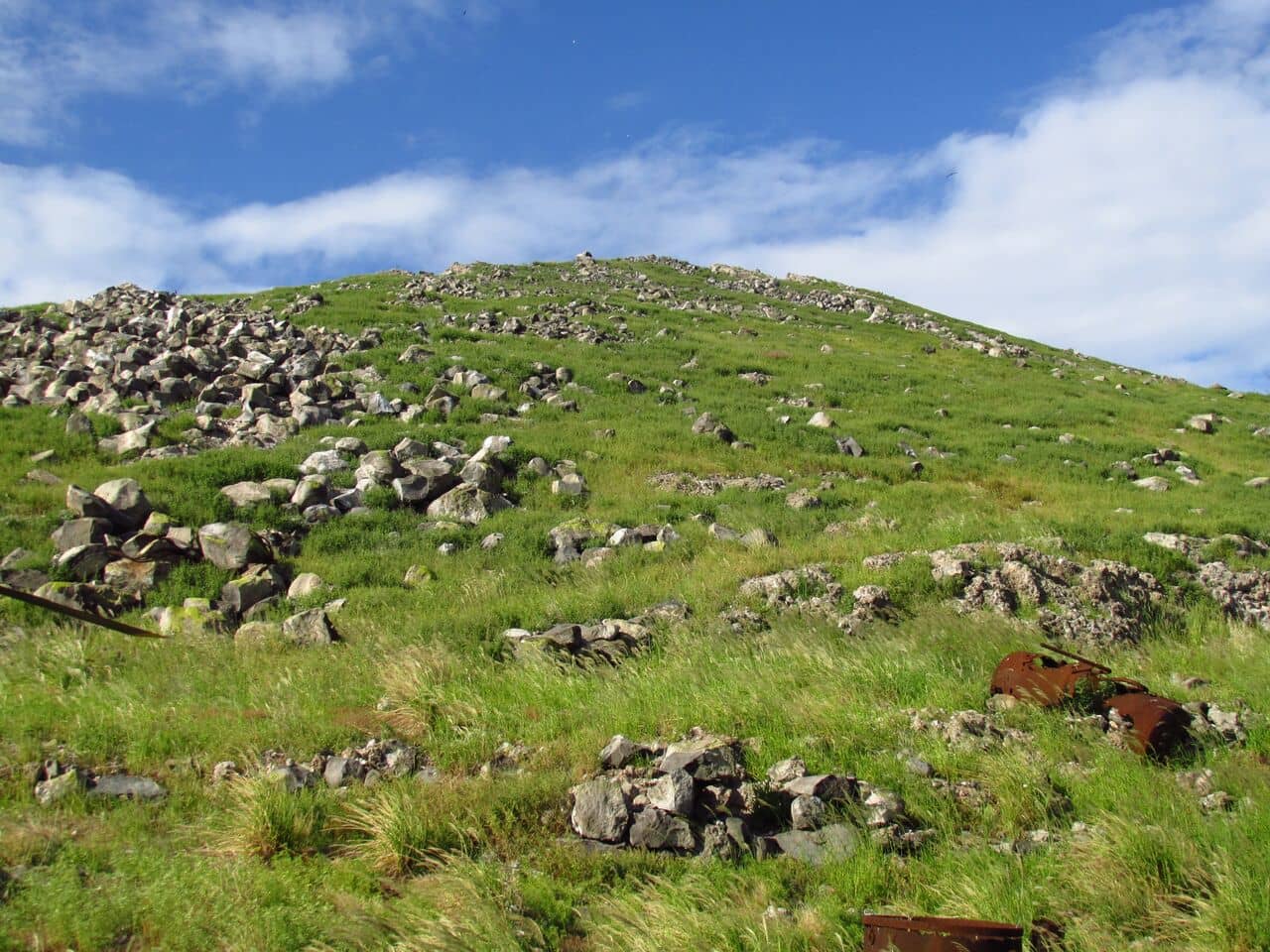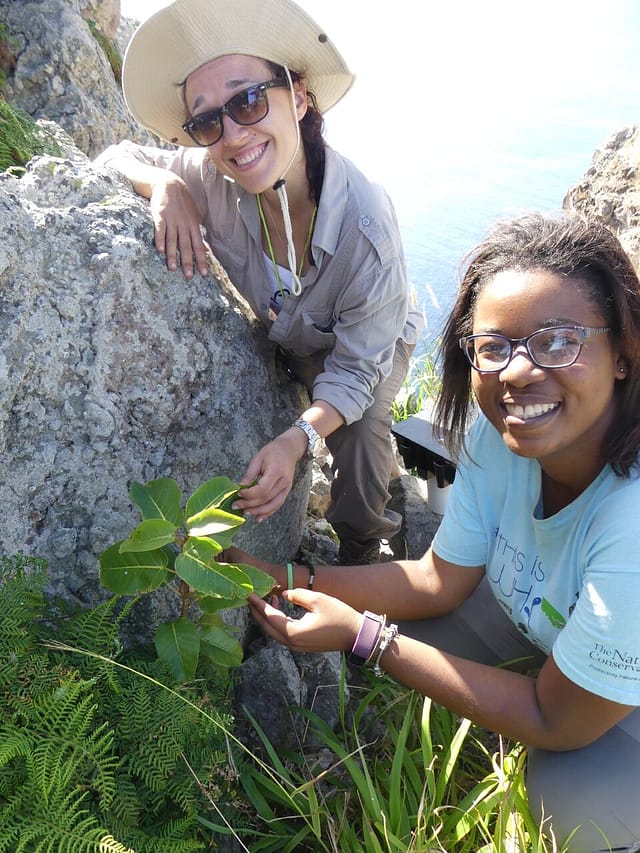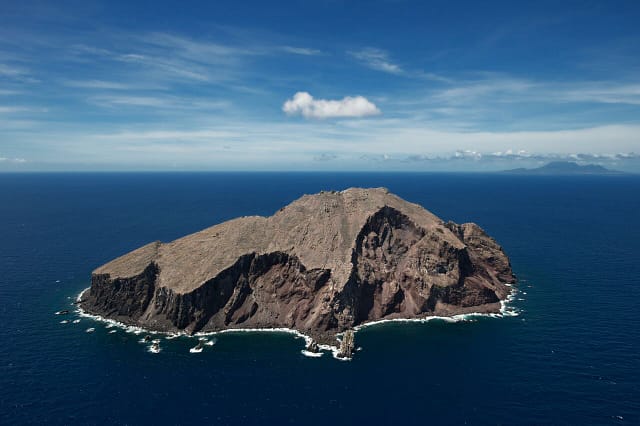
If conservationists had waved a magic wand, the results could hardly have been more
spectacular. Within 12 months of starving goats and thousands of ravenous rats being
removed from Redonda, this remote Caribbean island has witnessed a miraculous
transformation.
Since the ambitious restoration programme2 was rolled out, the rock of Redonda has been
transfigured from an inhospitable lunar landscape to a greener haven. More importantly, the
unique plants and animals native to this isolated, uninhabited outpost of Antigua and
Barbuda are making a rapid recovery after being freed from an alien invasion.
The evocatively named Redonda ground dragon, a rare black lizard found nowhere else on
the planet, has doubled in number – just one of the many fantastic beasts that have been
pulled back from the brink of extinction by removing the predatory black rats and plant-devouring goats.
And it doesn’t stop there. In less than a year, numbers of the equally rare Redonda tree
lizards have tripled, hundreds of new trees have sprung up, land birds have increased
tenfold, and the island’s globally important seabird colonies – including magnificent
frigatebirds and several booby spnimble goats and remove over 6,000 rats from every inch of Redonda’s rugged terrain.
This Caribbean island makeover involved meticulous planning, ingenuity, and edge-of-the-seat
manoeuvres that included abseiling down sheer cliff faces to lay down rat bait and – thanks
to the skilled pilots of Caribbean Helicopters Ltd – landing equipment in very tight spots.
New Zealand-based Wildlife Management International Limited led the rat eradication team:
“We have over 30 years of experience in clearing invasive species from islands,” said
ecologist Elizabeth (Biz) Bell, “but having a ground team, rope access team and helicopter
team using a combination of bait stations and scattering by hand to successfully target all of
the rats makes the Redonda project unique.”

The British Mountaineering Council (BMC) played a vital role in ensuring that even the
steepest cliffs could be reached. Safety was paramount, as CEO Dave Turnbull recalls: “The
volcanic cliffs of Redonda presented an extremely challenging environment for the climbers
to operate in; the BMC was very pleased to support this important conservation project and
help ensure the safety of the team throughout the work.”
The safe removal of the malnourished herd of rare-breed feral goats presented an altogether
different challenge, as Dr Karl Campbell of Island Conservation can attest: “This project was
essential for the well-being of the goats and to enable the ecological recovery of the island.
The translocation of goats has seen a suite of positive impacts, and further benefits will
unveil themselves in time.”
One intriguing consequence of removing the predatory rats is that lizards on Redonda are
rapidly changing their behaviour, according to scientists from Harvard University and the
Museum of Natural History in Paris.

“We measured anti-predator behaviour and found that the ground dragons are becoming fierce and fearless now that the rats are gone, chasing and eating even adult tree lizards”, said Dr Colin Donihue. “This new balance of nature is more in line with what we’d expect of these animals before rats were ever on the island.”
The long list of organisations that cooperated in this mission reflects the complex challenges
that had to be overcome.
The government of Antigua and Barbuda along with the EAG and
FFI joined forces with leading technical specialists from the UK, USA and New Zealand.
Thanks to their collaborative efforts, Redonda has been rat free since March 2017, while the
feral goats4 have been rehoused and are being cared for by the government’s Veterinary
and Livestock Division on Antigua. Biosecurity equipment and protocols have also been
installed to prevent future invasions.
What’s next for Redonda?
Redonda harbours endemic species that occur nowhere else in the world, including at least
five species of reptiles, and globally important colonies of seabirds. Conservationists argue
that Redonda’s unique and special wildlife, coupled with the historical remains of one of the
region’s largest guano mines, warrants greater protection for the island. They’re not the only
ones. A recent nationwide survey revealed that over 96% of Antiguans and Barbudans
agree the island should be protected.
Preparations for designating Redonda and the surrounding sea as a reserve are now under
way, led by the Redonda Steering Committee, chaired by the Department of Environment.
According to Dr Robin Moore from US-based Global Wildlife Conservation, which has
supported this project and is now helping with planning for the protected area, “It’s incredible
to see this radical and rapid transformation of Redonda from a bare rock to a carpet of
vegetation. As plants and animals continue to rebound, this could truly be a showcase
sanctuary for wildlife.”

Advertise with the mоѕt vіѕіtеd nеwѕ ѕіtе іn Antigua!
We offer fully customizable and flexible digital marketing packages.
Contact us at [email protected]


















Nice.
Great work
Really Nice-could it be used as a tourist attraction though?Given it’s steep terrain i wonder if it will be considered..
Wow… It is a beautiful piece of rock sitting out there in the ocean. The dung from the former occupant, the animals, had made the island very green. It is very healthy.
Wonderful job. Pray that all continue to go well
Comments are closed.